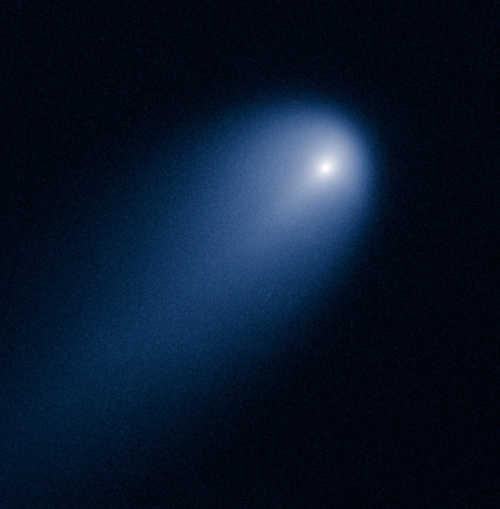
Later this year, Comet ISON is expected to become a naked-eye object when it skims through the atmosphere of the sun.
The Hubble Space Telescope has just obtained a sneak preview.
Hubble photographed ISON on April 10. At the time, the comet was 386 million miles from the sun (394 million miles from Earth), just inside the orbit of Jupiter.
Even at that great distance the comet is already active as sunlight warms the surface and causes frozen gases to vaporize.
A detailed analysis of the image reveals a strong jet blasting dust particles off the sunward-facing side of the comet’s nucleus.
Astronomers are using Hubble images to measure the activity level of the comet and constrain the size of its icy nucleus. Preliminary measurements suggest that the ISON's nucleus is no larger than three or four miles across. This is remarkably small considering the high level of activity observed in the comet so far, said researchers.
The comet’s dusty atmosphere, or "coma", is approximately 3,100 miles across, or 1.2 times the width of Australia. A dust tail extends more than 57,000 miles, far beyond Hubble’s field of view.
A more careful analysis is underway to improve these measurements and to predict the comet’s activity when it skims 700,000 miles above the sun's roiling surface on November 28.
For updates, stay tuned to Science@NASA.
Dr. Tony Phillips works for the National Aeronautics and Space Administration.

 How to resolve AdBlock issue?
How to resolve AdBlock issue? 



